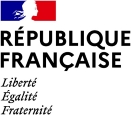Tu-Ky LY

Ineris - Verneuil-en-Halatte
Parc Technologique ALATA - BP2
60550 Verneuil-en-Halatte
Modeling of a quantitative Adverse Outcome Pathway Leading to Decreased Fecundity in Zebrafish
In the context of increasing exposure to endocrine disruptors (EDs) in the environment, understanding and managing their impacts on ecosystems has become crucial. These substances, of diverse structures and origins, disrupt the endocrine system by influencing key biological functions, notably reproduction. Consequently, current European regulations require rigorous identification of EDs, by establishing a causal link between exposure, mode of action, and adverse effects. Modeling emerges as a promising approach, offering tools to meet these regulatory requirements while respecting ethical considerations in research.
This thesis aligns within these standards and aims to develop a physiologically based kinetic model coupled with a toxicodynamic model (PBK-TD) of the gonadotropic axis in zebrafish, contributing to the construction of a mechanistic quantitative adverse outcome pathway (qAOP) for aromatase inhibition.
In conjunction with the MOZAIC, AIDEZ, and GinFiz projects, this model accurately predicts the internal doses of the two azole fungicides studied, imazalil (IMZ) and prochloraz (PCZ), across various exposure scenarios, i.e., duration and route of exposure, and links these internal doses to their effects on the gonadotropic axis, from gonadal aromatase inhibition to reduced fertility.
The development and validation of the PBK-TD model for the gonadotropic axis were possible through the experimental exploration of the toxicokinetics (TK) of IMZ and PCZ and the measurement of their internal concentrations in key organs of wild-type zebrafish. Toxicodynamic (TD) was evaluated using several endocrine biomarkers, i.e., steroid hormones (17β-estradiol, 11-ketotestosteron), vitellogenin, in vivo expression of the gonadal aromatase gene, as well as fecundity, in Cyp19a1a-eGFP transgenic zebrafish. Furthermore, this work includes a 3D histological analysis of oocyte dynamics, refining the description of ED effects on fertility and linking these effects to potential population-level impacts.
Thus, the PBK-TD model of the gonadotropic axis developed in this thesis represents a first step toward a mechanistic qAOP for aromatase inhibition, linking exposure and endocrine disruption mode of action to the observed adverse effects on reproduction. This work also lays the groundwork for integrating models of oogenesis and population dynamics.
Keywords: PBK, PBK-TD, endocrine disruptors, HPG axis, zebrafish, qAOP

